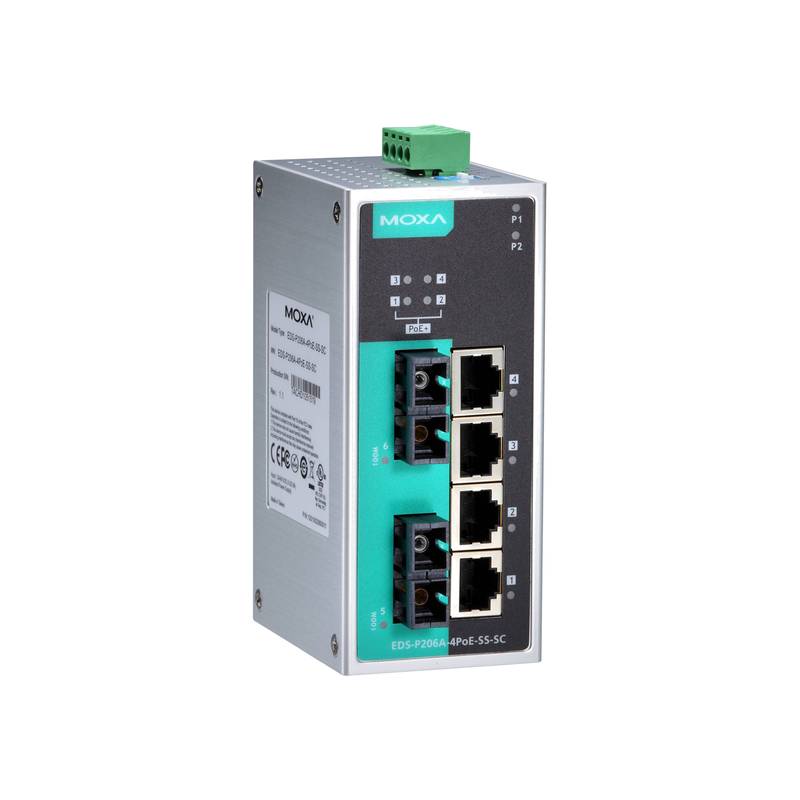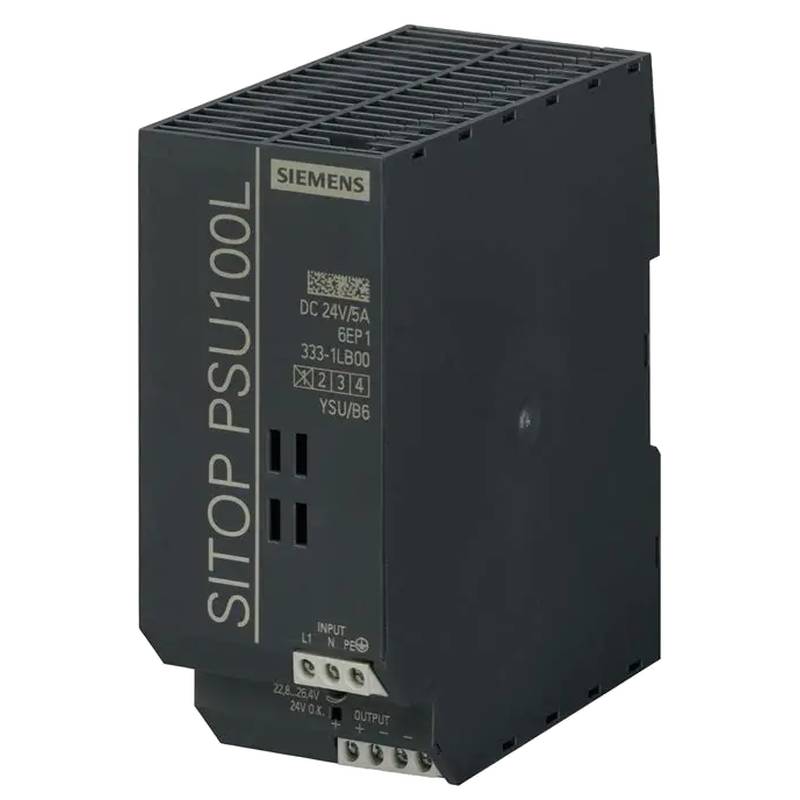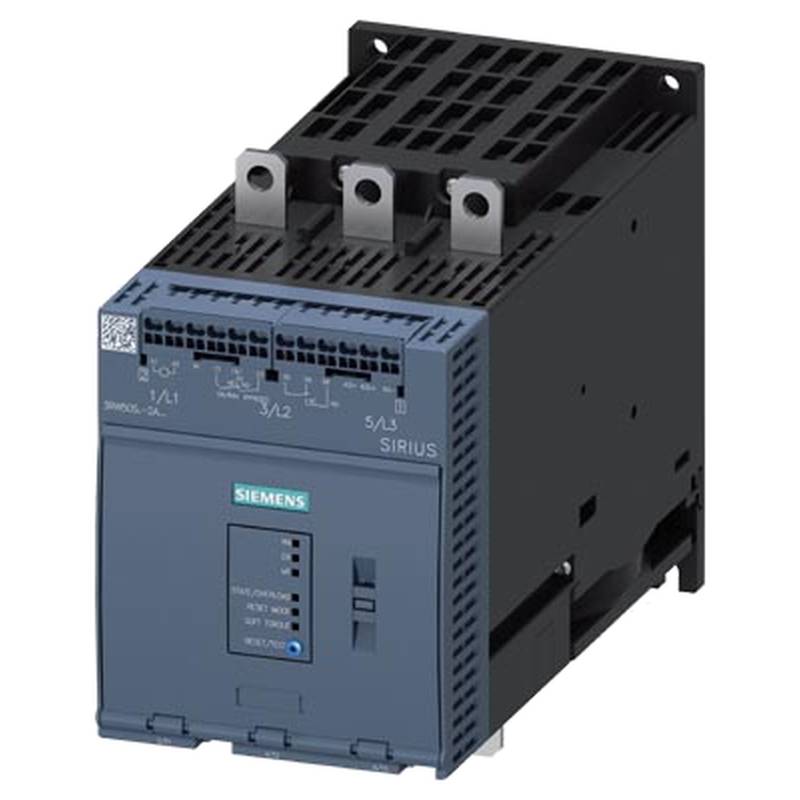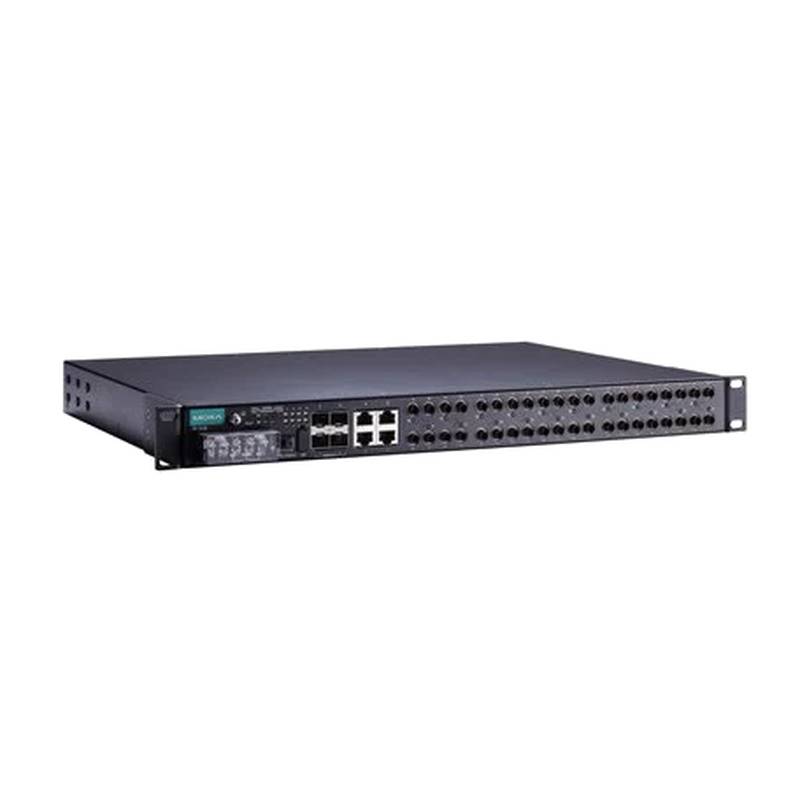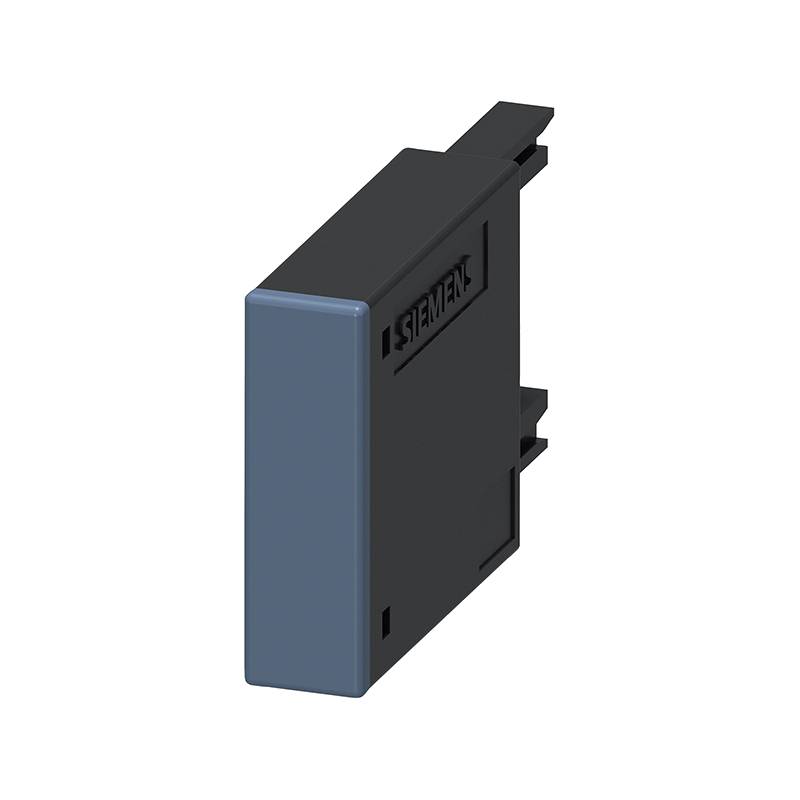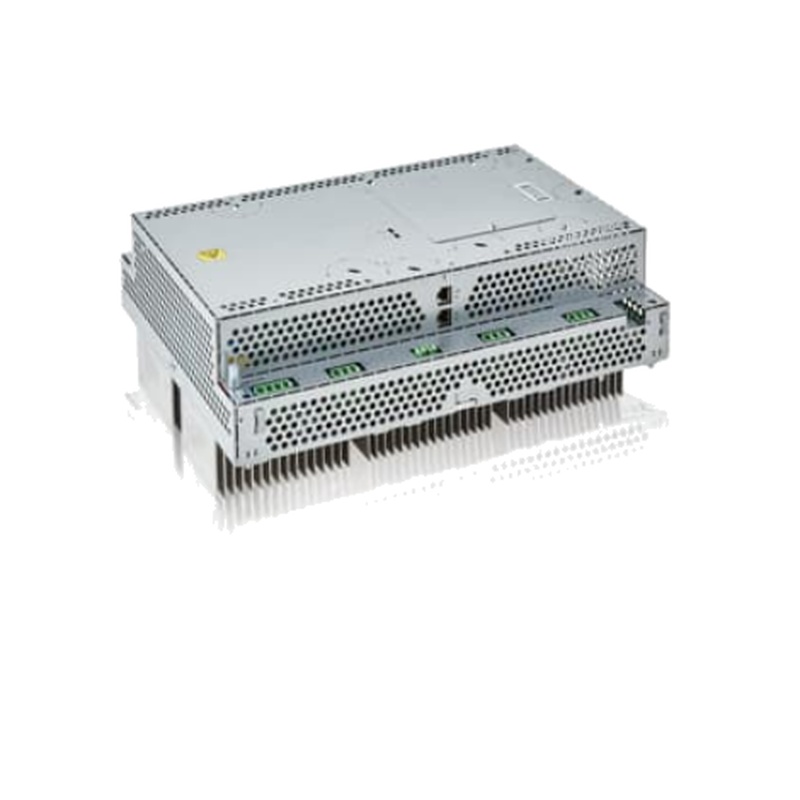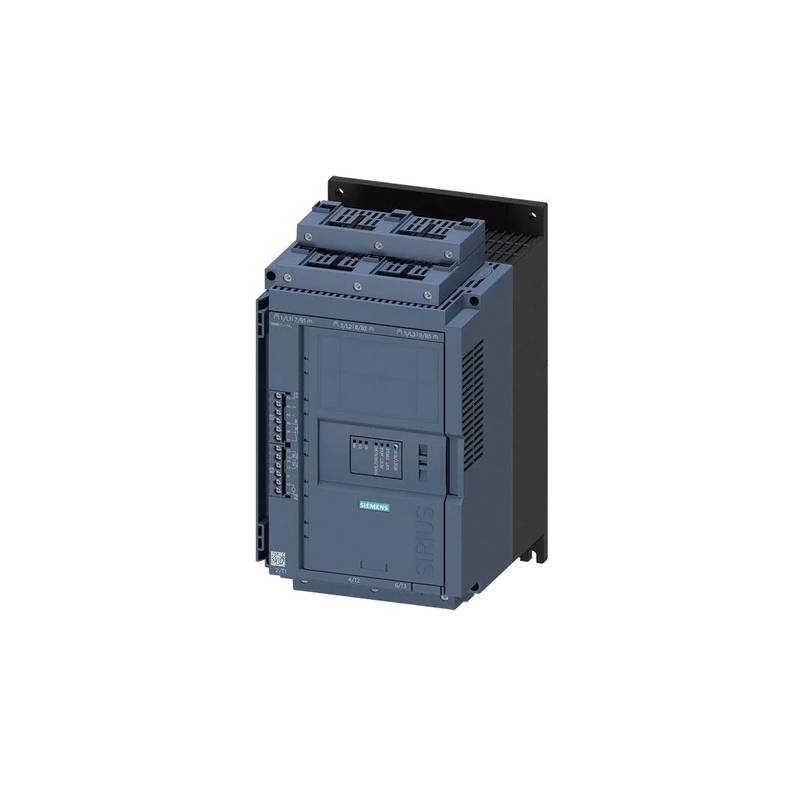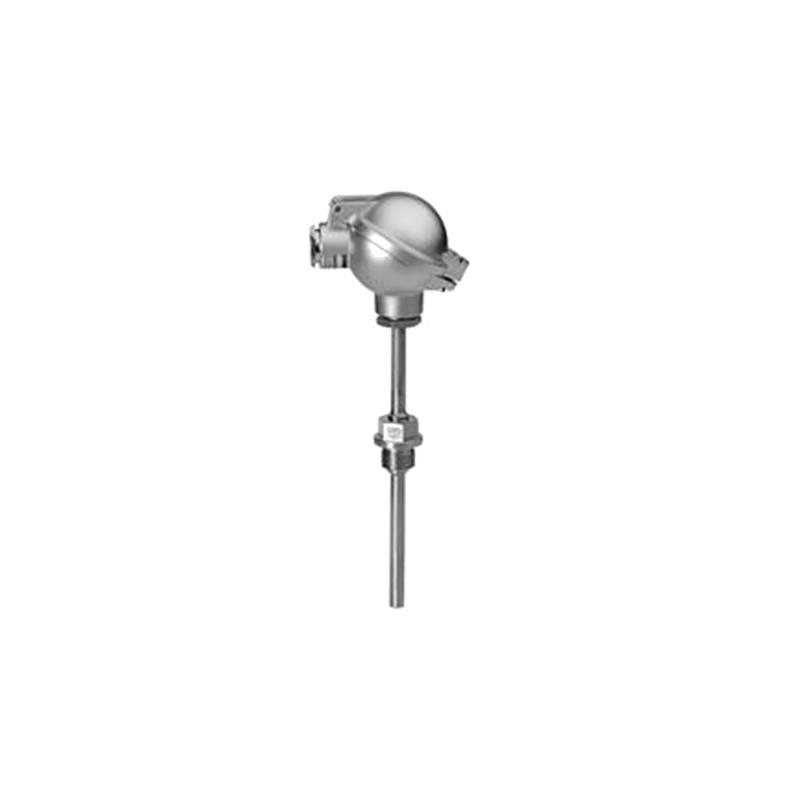
The Moxa EDS-P206A-4PoE-SS-SC-T is a robust industrial Power over Ethernet (PoE) fiber-redundant switch engineered for demanding environments. Its core advantages lie in its advanced redundancy mechanisms, comprehensive PoE capabilities, and ruggedized design, making it ideal for critical infrastructure applications. Key technical parameters include six 10/100BaseT(X) or 100BaseFX ports, with four of these supporting IEEE 802.3af/at PoE standards, providing up to 30W per port. The switch features a wide operating temperature range of -40 to 75°C, ensuring reliability in extreme conditions. Its dual 24/48 VDC power inputs and Turbo Ring™ redundancy technology offer high availability, with a recovery time of less than 30 ms. The single-mode fiber optic ports (SC connector) extend communication distances significantly, crucial for distributed industrial networks.
Product Specifications
| Feature | Specification |
| :---------------------- | :------------------------------------------ |
| Ethernet Ports | 2 x 10/100BaseT(X) |
| Fiber Ports | 4 x 100BaseFX (SC connector, single-mode) |
| PoE Ports | 4 x IEEE 802.3af/at compliant |
| PoE Power Budget | Up to 30W per port |
| Power Input | 2 x 24/48 VDC power inputs |
| Redundancy Technology | Moxa Turbo Ring™ (recovery < 30 ms) |
| Operating Temperature | -40 to 75°C (-40 to 167°F) |
| Enclosure | IP30 |
| Dimensions | 50 x 135 x 105 mm (1.97 x 5.31 x 4.13 in) |
| MTBF | Varies by configuration, typically > 20 years |
Core Features & Market Positioning
The Moxa EDS-P206A-4PoE-SS-SC-T distinguishes itself through its integrated approach to power delivery and network resilience. Its substantial PoE budget per port simplifies deployments by eliminating the need for separate power sources for devices like IP cameras, wireless access points, and sensors. The inclusion of single-mode fiber ports is a significant differentiator, enabling long-distance, noise-immune data transmission vital for sprawling industrial sites such as oil and gas facilities, power substations, and transportation networks. This combination of robust PoE, extended-range fiber, and patented Turbo Ring™ redundancy places it as a superior choice for mission-critical applications where uptime and reliable data flow are paramount. Its industrial-grade construction, including a wide temperature range and IP30 rating, further solidifies its position as a dependable component in harsh operational environments.
Key Application Scenarios
This industrial PoE fiber switch is particularly adept at supporting networked surveillance systems in remote locations. The PoE ports can power high-definition PTZ cameras, while the single-mode fiber connectivity allows data transmission over many kilometers back to a central control room, bypassing electromagnetic interference common in industrial settings. Another critical application is in smart grid deployments, where the switch can reliably power sensors, control units, and communication modules across substations and along transmission lines, leveraging its redundant network capabilities for uninterrupted monitoring and control. Furthermore, in intelligent transportation systems (ITS), the EDS-P206A-4PoE-SS-SC-T facilitates the networking of traffic cameras, variable message signs, and traffic management devices, ensuring consistent operation and data acquisition even under challenging environmental conditions and over extensive distances.
Practical System Integration Guidance
Integrating the Moxa EDS-P206A-4PoE-SS-SC-T into an industrial network is straightforward due to its plug-and-play nature for basic functions. For power, connect a compatible 24/48 VDC power source to one of the dual power input terminals; the second input provides redundancy. Network connections involve standard Ethernet cables for copper ports and appropriate single-mode fiber optic cables (SC connectors) for the fiber ports. For PoE devices, simply connect them to the designated PoE ports; the switch automatically negotiates power delivery. For advanced configurations, such as setting up the Turbo Ring™ redundancy, access the switch's web interface or use Moxa's network management software (like MXview) to define the ring topology and backup port. Ensure proper grounding of the switch chassis to mitigate electrical noise and enhance safety.
Operation and Risk Mitigation
Operating the Moxa EDS-P206A-4PoE-SS-SC-T involves routine monitoring of power input status and network traffic through its management interface. The dual power inputs are a critical risk mitigation feature; if one power supply fails, the other seamlessly takes over, preventing network downtime. The Turbo Ring™ redundancy ensures that if a link or switch within the ring fails, network traffic is rerouted automatically within milliseconds, minimizing disruption. Common troubleshooting might involve checking power supply voltages, verifying cable integrity for both copper and fiber connections, and ensuring PoE-powered devices are within the switch's power budget. Faulty link status indicators on the device or within the management software typically pinpoint connection issues, while power failure alerts would highlight problems with the power source.
Scalability & Long-Term Value
The Moxa EDS-P206A-4PoE-SS-SC-T offers significant long-term value through its inherent scalability and compatibility with evolving industrial network demands. Its robust design and adherence to industrial standards ensure a long operational lifespan, reducing the total cost of ownership. The inclusion of fiber optic ports allows for future network expansion over much greater distances than copper alone, accommodating growth in facility size or data acquisition needs. As industries move towards Industrial Internet of Things (IIoT) and digital transformation initiatives, this switch provides a reliable backbone capable of supporting increased data throughput and the connection of a wider array of intelligent devices. Its compatibility with Moxa's broader industrial networking portfolio also facilitates seamless integration into larger, more complex management systems.
FAQs
What is the maximum distance for the Moxa EDS-P206A-4PoE-SS-SC-T fiber ports?
The single-mode fiber ports on this switch support extended reach up to 20 kilometers. This enables reliable network connectivity across large industrial campuses or remote operational sites.
This long-distance capability is crucial for applications where distributed devices need to communicate back to a central control system. The fiber optic medium also provides immunity to electromagnetic interference, ensuring signal integrity over these extended links.
Utilizing single-mode fiber is a key advantage for future-proofing networks, allowing for greater scalability and the accommodation of increasing data demands without requiring intermediate network devices for signal regeneration.
Does the Moxa EDS-P206A-4PoE-SS-SC-T support Power over Ethernet Plus (PoE+)?
Yes, the switch fully supports IEEE 802.3at, commonly known as PoE+, delivering up to 30 watts per port. This is sufficient power for demanding devices like high-definition PTZ cameras or wireless access points.
The higher power output per port simplifies deployment by reducing the need for separate power supplies, consolidating cabling and installation efforts in harsh industrial environments.
Ensuring that the total power consumption of connected PoE devices does not exceed the switch's overall power budget is important for stable operation.
How does the Turbo Ring™ redundancy work on the EDS-P206A-4PoE-SS-SC-T?
Moxa's Turbo Ring™ technology creates a redundant network topology that can recover from a link or device failure in under 30 milliseconds. It allows for multiple switches to be interconnected in a ring formation.
If a break occurs in the ring, traffic is automatically rerouted through the remaining path, ensuring continuous network operation for critical applications like surveillance or process control.
To implement Turbo Ring™, configure one port as the "backbone fast" port and another as the "backup" port within the ring. This establishes the primary and alternative data paths.














